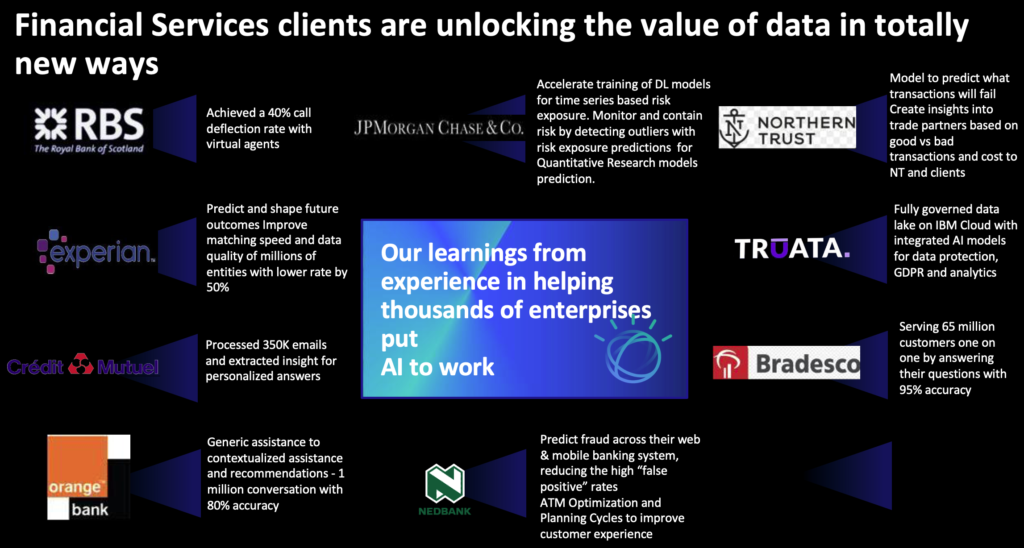Data-Driven Digital Transformation of Banking: The Why and How
The banking sector is facing disruption. Just like Amazon and other big e-commerce players disrupted the retail industry, the banking sector is facing a similar kind of disruption at the hands of tech-driven financial services firms and online banks. These firms have a more modern outlook. For instance, they utilize the full power of mobile apps to the best of their capability, delivering services to customers wherever they are. This makes tech-driven financial services firms quite popular with the millennials. In fact, the fintech sector is growing rapidly at a rate of 25% annually.
Of course, existing banks have a major advantage over their rivals – the depth of the customer data they possess. But to maximize the value of all this data, banks need to unify all the data from various systems and use it in integration with technology to get a better understanding of their customer needs.
To fulfill their potential and keep up with the ever-evolving landscape, major banks and financial institutions need to transform themselves to become more efficient, agile, and responsive.
It seems clear that to sustain and flourish, the banking sector will need to adopt a data-driven digital transformation. But what shape could this data-driven digital transformation take? Why is it needed? And how to start down that road? Let’s answer all these questions in this article.
What is a data-driven digital transformation?
Digital transformation can be called the process of integrating digital technology into different operational areas of a business to drive up efficiency, get business insights, and improve revenue through exploiting new business or service delivery models.
Digital transformation as a strategy must be fueled by data-driven insights. Since the banking sector is among the most data-intensive industries, it must look at utilizing this data to turn it into meaningful insights.
When implemented properly, the data-driven digital transformation can propel banks to become smoothly running hives of data-centric systems.
Need for a data-driven digital transformation
Using data-driven insights to power the digital transformation strategy of a traditional financial institution can yield several benefits. Some of them are:
· Accelerate data analytics benefits
Using data analytics as an important part of the digital transformation process helps accelerate the pace of change, shorten innovation cycles, enable data integration, and improve customer experience. The areas that can be improved with analytics in a digital-first model are virtually limitless.
· Lower costs
Using new technologies might seem like an investment-heavy approach in the beginning but when one looks at it holistically, it can prove to be a cost-lowering step. Improved operational efficiencies, more automation, reduced errors and rework, and optimal usage of available resources all help cost control.
· Better security
With the number of data breaches occurring these days, it is easy to see why security is so important to the banking sector. And since the banking sector deals with the actual funds as well as the most critical user data, it becomes of paramount importance for these institutions to put in place stringent data security measures.
As it happens, the existing data infrastructure is often incapable of dealing with modern threats. That is why digital transformation and modernization can play a crucial role. Better data security practices can be enabled, and more powerful security stances adopted with digital transformation.
How to adopt a data-driven digital transformation?
Quite often, the digital transformation begins by adopting digital practices in customer-facing functions. In these functions, data-driven digital transformation allows the bank to create more personalized customer engagement. Knowing the customer allows the bank to create more effective communication strategies and design better products and bundles. The key is to create value by using data to create smart interactions and develop digital-native products.
Creating smart interactions means the banks should create experiences for their customers based on their preferences. This can help customers perform their tasks easily and do more in less time. This will help increase customer retention and attract new customers.
Similarly, developing digital-native products means banks should work on producing products that leverage the power of the available technology to deliver value. For instance, chatbots can improve customer engagement while delivering effective customer service. These truly-digital products feed on customer data to give an unmatched experience.

Also, here are some considerations for banks to factor in as they adopt data-driven digital transformation:
· Putting the focus on cybersecurity
Banks are required to protect the personal information of their customers. This makes it essential for them to put the focus on cybersecurity. Cybercriminals are constantly looking for weaknesses in banking systems. Adopting advanced security measures powered by big data and analytics can help banks become more secure. These systems constantly look for any suspicious activities and alert the security systems to update their security posture in time for greater impact.
· Improving customer experience
Customers these days expect banks to be mobile-first. Since millennials form a large section of the customer base, they expect convenient and quick banking services on the go.
To offer their customers the facility of 24/7 banking, banks need to install high-level automation systems and real-time service delivery. Banks can also use machine learning tools to understand customer behavior and their banking habits to keep improving the way they serve them.
· Personalization and customization
A key factor that can improve the customer experience is personalization. Banking services personalized for individual customers can significantly increase customer engagement, lower costs, increase sales, and build loyalty among customers.
When banking institutions understand the needs of customers, they win more business. And since banks already have a large amount of customer data, they can optimally utilize it to deliver customized options that resonate better.
· Data processing
All the financial services of the future will rely heavily on data. And there will be a lot of it, of all types. Transaction data, customer data, log data, audio data, visual data, data from social media, and IoT data will abound. The ability to generate, clean, store, process, and secure structured and unstructured data will help banks increase revenue, improve security, and enhance customer service.
This is where IBM along with Veracitiz’s Data & AI offerings will help to meet critical banking requirements to lower costs and retain customers
IBM offers a variety of AI-powered solutions to address the needs of the modern financial institution. Running on IBM Cloud Pak™ for Data, IBM’s leading data and AI platform, these solutions help financial services enterprises launch programs with speed and agility, quickly integrate AI models, deploy systems in under four hours, and spot financial crimes.

IBM provides a low-code, collaborative framework to build cognitive solutions. It offers a pre-defined reference architecture based on Cloud Pak for Data, open source and Red Hat OpenShift technology.
Offering a single platform to rapidly and easily build cognitive microservices infused with AI, IBM Cloud Pak for Data truly shortens the time to market for innovative solutions. It efficiently and securely supports the complete lifecycle of state-of-the-art business solutions: from design to implementation, pipeline, operations and monitoring in an integrated platform.

Adopting a company-wide data-driven digital transformation will not be an easy task for the banking industry. But doing so with IBM will help make this sector more innovative, agile, and secure. By investing in digital transformation, banks will be investing in their organization’s capability to be adaptable in today’s financial world.
For more information connect us here
To know more on IBM Solution for financial services Click Here
